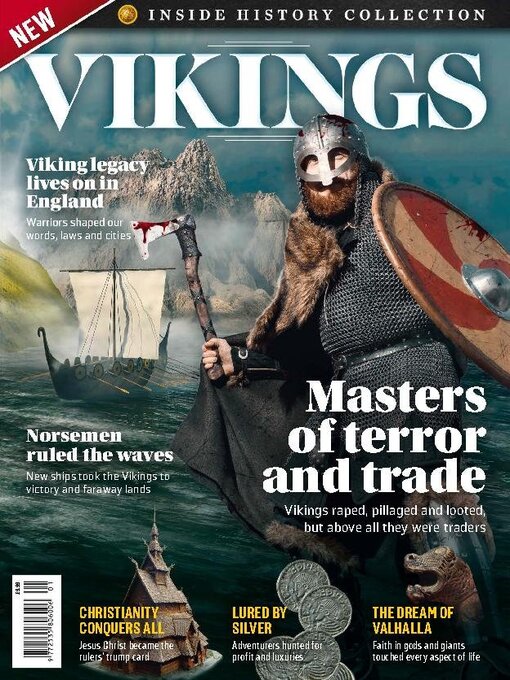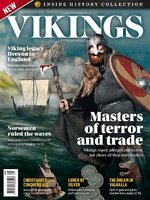In this series, you are taken back to the dramatic events, who have shaped world history for better or for worse. From the construction of the first cathedrals in Europe of the plague to the landing in Normandy in 1944. From the crusaders' bloody marches towards Jerusalem to the daring pilots who gave man air under his wings. Along the way, you will be enlightened in an entertaining way as to why the events took shape as they did. This series has the dramatic narrative as its focal point. You not only get an overview of history's most significant events, but also captivating human destinies, spectacular feats, and history's greatest heroes and villains brought to life.
AGE OF THE NORSEMEN
Inside History Collection
THE VIKING EMPIRE
THE FIRST VIKINGS 500-900 • For centuries, the Scandinavians had been self-sufficient. Fertile farmland, rivers full of fish and forests with plenty of game and timber provided the Scandinavians with all their everyday necessities. But in the eighth century, everything changed. Local chieftains began to desire silver, and soon groups of warlike Norse set out on raids – ready to plunder and ravage their way to riches.
SHIP BUILDERS 700-1060 • With the arrival of autumn in Scandinavia, specialised craftsmen started the search for suitable lengths of timber. Large areas of forest were felled to provide wood so Viking engineers could build their most important invention: the longship. Throughout the winter, artisans chopped and planed the wood to form planks, keels and masts before slowly assembling the longships like a giant jigsaw puzzle. By early spring, the shipbuilders could finally hoist the ships’ sails and send yet more vessels on their way along Europe’s rivers or across the Atlantic.
THEY WENT NORTH 800-1025 • Rivalries between Scandinavian magnates drove young, landless men on long voyages in the ninth century. Crossing the turbulent waters of the North Atlantic, emigrants found a steam-filled bay on the west coast of Iceland, where they founded a new colony. Soon, Vikings were sailing north by the tens of thousands to seek out new land and a better future. They continued to move on: first to the Faroe Islands, then to Greenland. And finally, thousands of miles to the west, where they found a fertile land populated by warlike natives they called “skræling”.
SMITHS AND SKALDS 700-1030 • The Vikings were as skilful in their workshops as they were on the battlefield. In the heat of his forge, the smith created everything from jewellery to saws, while the bone carver in his workshop shaped sword hilts from elk bones and turned cow femurs into ice skates. Most important of all the Viking artisans, however, was the skald. With songs of tribute, he could transform a lousy king into a hero, while a single satirical verse could destroy a man’s reputation.
VIKINGS IN ENGLAND 793-1042 • Large bands of Vikings plundered the British Isles in the middle of the ninth century. But unlike before, the Norse did not return home after their raids. They settled as colonists and quickly carved out an area where Viking laws and Norse customs prevailed. Known as Danelaw, it had 12-man juries and magistrates’ courts, and hundreds of towns with Scandinavian names soon sprang up. Humiliated Anglo-Saxon magnates became subject to extortion and could only watch as a Danish king crowned himself England’s ruler.
THE NORSE GODS • The Viking world of gods was full of superstition and rituals. The sacrifice of boars and stallions ensured a good harvest, while amulets protected against storms and unknown dangers. But despite the Vikings’ everyday concerns, every warrior dreamed of the same thing: to die an honourable death and end up in Valhalla – the hall of the gods, where there was an endless supply of mead and pork.
A LIFE OF SLAVERY 700-1074 • The Vikings didn’t simply...

 History’s greatest mysteries
History’s greatest mysteries
 Knights Templar - Lost secrets revealed
Knights Templar - Lost secrets revealed
 The vikings - Final Secrets Revealed
The vikings - Final Secrets Revealed
 Vikings
Vikings
 History’s 50 greatest mysteries
History’s 50 greatest mysteries
 Bloody revolutions
Bloody revolutions
 Events that changed the world
Events that changed the world